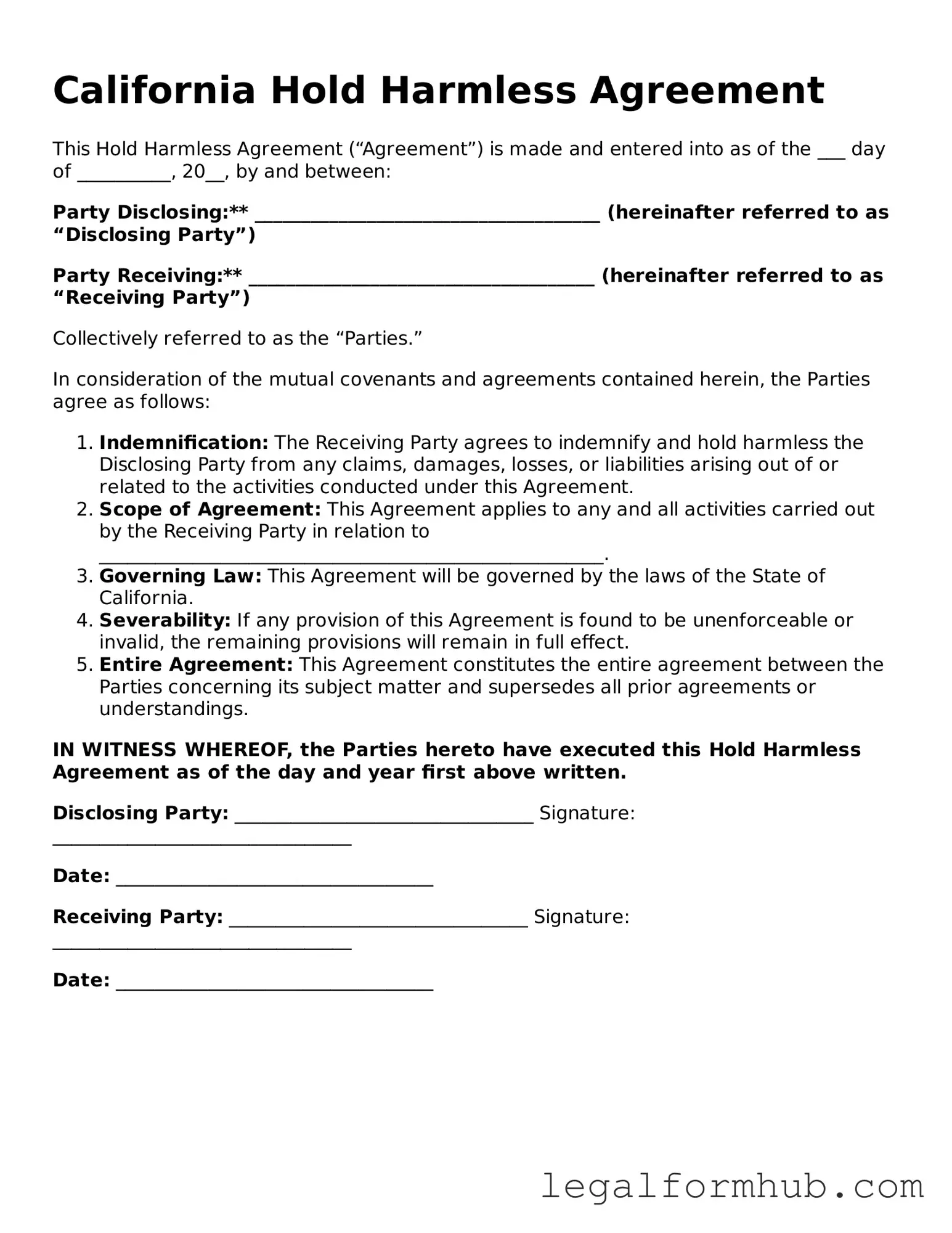The Indemnity Agreement is similar to the Hold Harmless Agreement in that both documents aim to protect one party from liability. In an Indemnity Agreement, one party agrees to compensate another for any losses or damages that may arise from a specific situation. This document often includes detailed terms about the nature of the indemnity and can cover a broader range of scenarios compared to a Hold Harmless Agreement.
The Waiver of Liability is another document that shares similarities with the Hold Harmless Agreement. It is typically used in situations where one party wants to limit their liability for any injuries or damages that may occur during an activity. By signing a Waiver of Liability, individuals acknowledge the risks involved and agree not to hold the organization or individual responsible for any harm that might occur.
The Release of Liability is closely related to the Hold Harmless Agreement. This document allows a party to relinquish their right to pursue legal action against another party for any injuries or damages incurred. It often requires the signer to understand the risks involved and to voluntarily give up their rights to sue, similar to the provisions found in a Hold Harmless Agreement.
The Liability Insurance Policy can also be compared to the Hold Harmless Agreement. While the Hold Harmless Agreement is a contractual arrangement between parties, a Liability Insurance Policy provides financial protection against claims made by third parties. Both serve to mitigate risks, but one is a legal contract, while the other involves insurance coverage.
The Disclaimer of Warranties is another document that aligns with the Hold Harmless Agreement. It is often used in sales and service contracts to inform customers that the seller does not guarantee the quality or performance of a product or service. By including a Disclaimer of Warranties, the seller limits their liability, similar to how a Hold Harmless Agreement protects one party from claims made by another.
The Non-Disclosure Agreement (NDA) shares a protective nature with the Hold Harmless Agreement. While NDAs primarily focus on confidentiality, they can also include clauses that protect parties from liability related to the disclosure of sensitive information. Both documents aim to safeguard the interests of the parties involved, albeit in different contexts.
The Colorado Notice to Quit form plays a significant role in the landlord-tenant relationship by notifying tenants of lease terminations, and it's essential for both parties to understand its implications. To gain a comprehensive understanding of related processes, landlords may also find valuable resources like the Landlord Eviction Notice helpful, as it further ensures that all legal requirements are met before initiating any eviction proceedings.
The Consent Form is another document that resembles the Hold Harmless Agreement. This form is often used in medical or recreational settings, where individuals agree to participate in activities that may involve risk. By signing a Consent Form, individuals acknowledge the risks and release the organization from liability, similar to the purpose of a Hold Harmless Agreement.
Finally, the Service Agreement can be compared to the Hold Harmless Agreement. In a Service Agreement, terms are outlined for services rendered, including responsibilities and liabilities. Often, these agreements contain Hold Harmless clauses to protect service providers from claims related to the services they provide, ensuring that both parties understand their obligations and risks involved.
